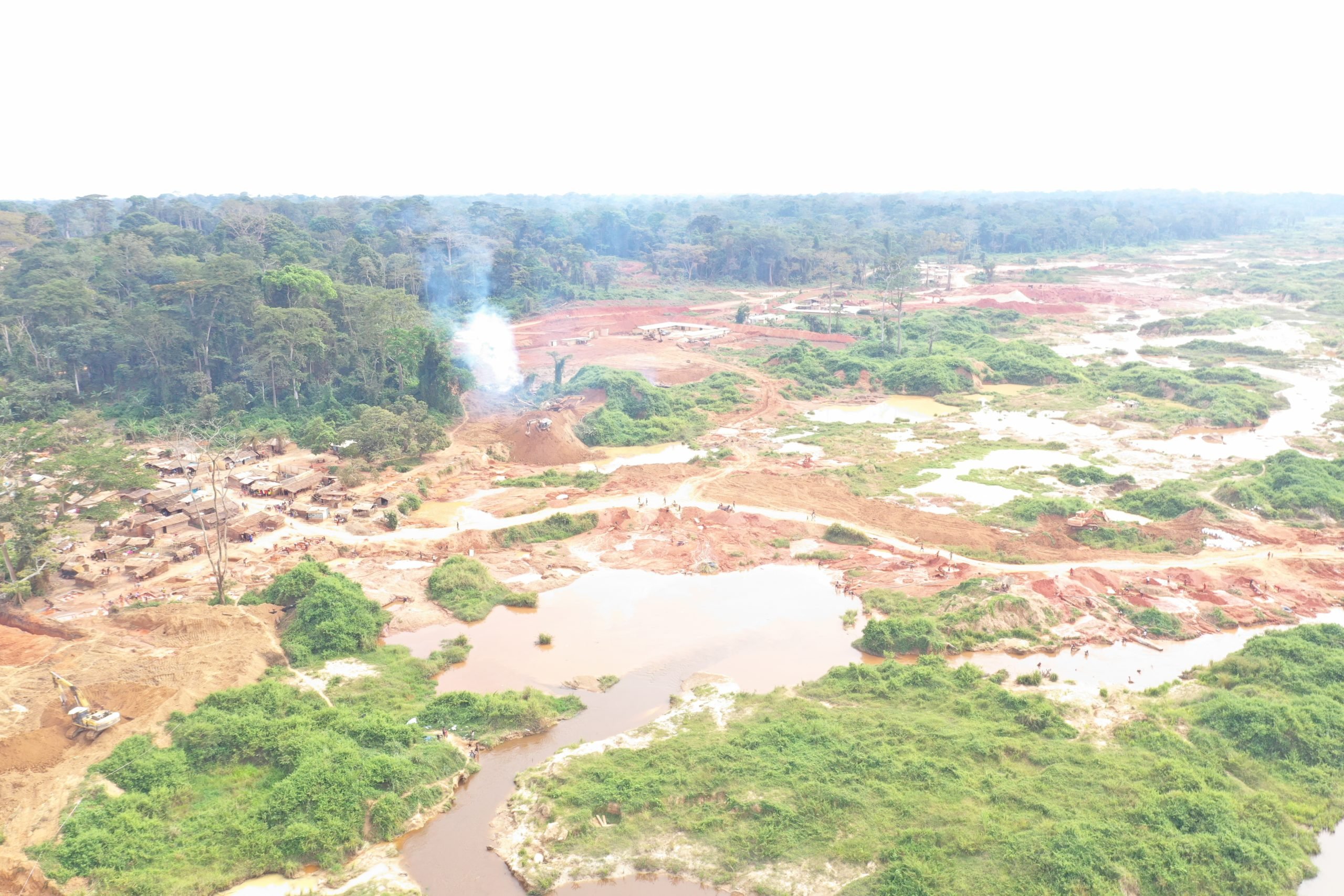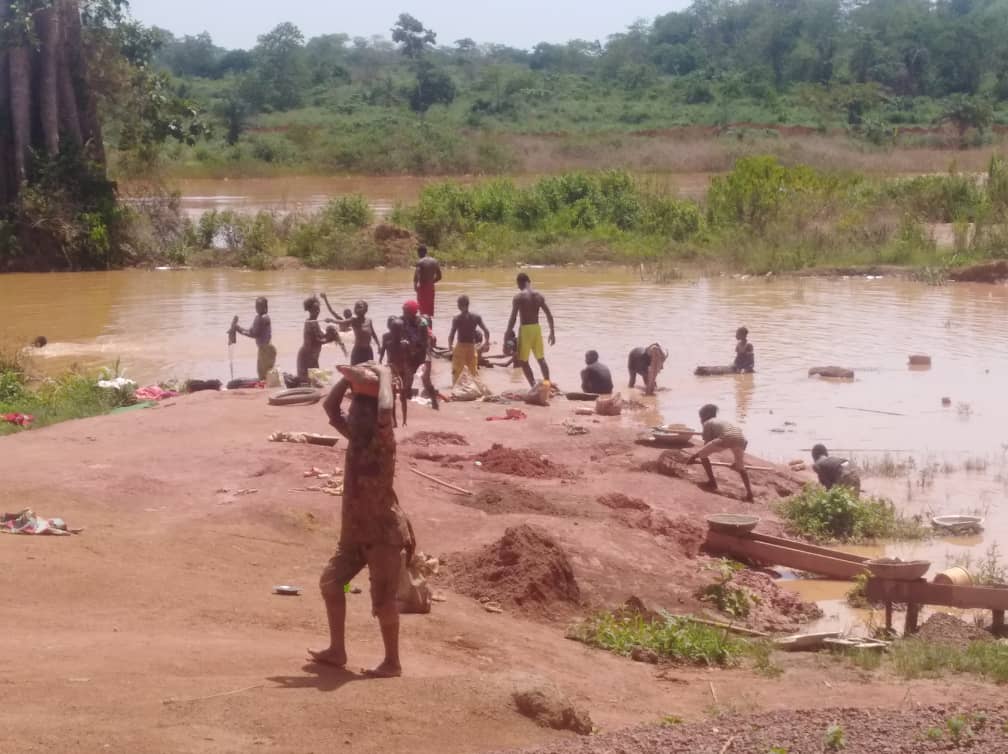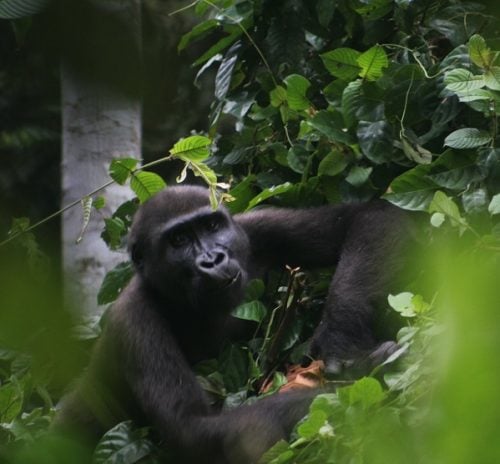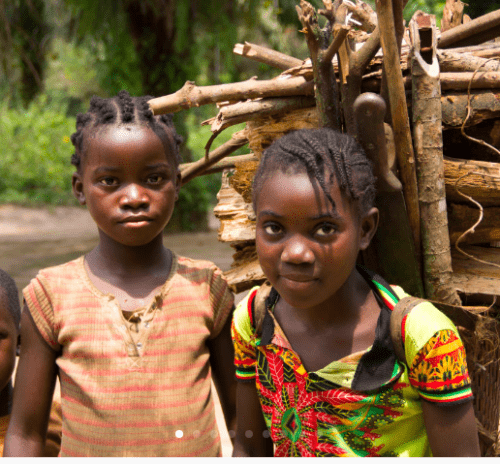At least 150 people have died in hazardous pits abandoned by the gold mines that are decimating Cameroon’s forests. Madeleine Ngeunga investigates
A rockslide killed seven people in an abandoned gold mining hole on April 20 2021 in Malewa, Betaré Oya in the Lom Et Djerem department of East Cameroon.
Such deaths occur regularly in the eastern region and Adamaoua, the country’s two main gold mining regions, according to the civil society organization Forêts et Développement Rural (FODER).
The most publicized case remains that of Samba, a 12-year-old student who drowned in an unrehabilitated gold pit on the eve of the 2017-2018 school year.
“Samba was returning from the field where he had gone to help his mom harvest corn. While crossing the Diengou River, he took a wrong step and was engulfed by the waters in a hole about 15 meters deep,” recalls his father, Faustin.
The open-pit mine had been dug to exploit gold and was abandoned by the company Metalicon SA.
Following Samba’s death, the family filed a complaint with the support of FODER and recently won a case at the Court of First Instance of Batouri, in the Kadey department. Metalicon SA was found guilty of dangerous activities and manslaughter. The company was fined 500,000 CFA francs and ordered to pay two million francs in damages to Samba’s family.
However, the deadly hole that claimed his life and hundreds of other gold pits dug in the forest have not been closed and continue to claim victims. Between 2014 and 2020, FODER counted more than 150 deaths at abandoned mining sites in Cameroon, more than 90% of which occurred in the East region, the country’s largest forest region.
Holes in the forest
“Before, there were trees everywhere in Kambèlè. Our village was covered in forest and we had our cassava, cocoa and plantain plantations there,” recalls Sosthene Zo’o, a resident in the village.
This all changed with the construction of the Lom-Pangar hydroelectric dam in eastern Cameroon. Forest loss in the region has been on the rise since 2012, the year construction of the Lom Pangar dam began.
According to data from Global Forest Watch, East Cameroon lost about 255,000 hectares of forest between 2012 and 2020 – equivalent to a 2.4% decrease in vegetation cover since 2000 and 111 million tons of carbon dioxide (CO2) emissions.
The department of Lom-Et-Djerem, where the Lom Pangar dam was built, has suffered the greatest loss of forests during this period. Lom-Et-Djerem is also the department most impacted by semi-mechanized artisanal gold mining, and is responsible for more than 70% of the deaths recorded in abandoned mining holes between 2014 and 2020, according to FODER data analysis.
“Our impact study predicted that the land would be submerged by the dam’s reservoir,” says researcher Eric Voundi, who conducted a study on the socio-environmental changes caused by mining in Bétaré Oya, in the Lom-Et-Djerem department. “It was therefore necessary to exploit alluvial gold in this area before this deadline.”
Read also: Filled with Deadwood, Lom Pangar Dam Threatens Climate
In 2007 the government launched a gold recovery project and invited Cameroonian nationals to apply for artisanal exploitation permits to mine gold in the area of the dam.
After extracting the gold resources, the semi-mechanized artisanal mine operators migrated to other localities, causing destruction and degradation of the forests in their path, according to the local branch of the international coalition Publish What You Pay.
On abandoned mining sites, plots of land once covered with forests are now artificial lakes full of mud. In some places, dried out trees and the remains of dead tree trunks are all that remain. Satellite images show holes in the middle of the forest, and these holes are getting bigger over the years.
According to Voundi, deforestation increased by about 9% in the commune of Bétaré Oya between 2005 and 2017. “Mining accounts for nearly 90% of this dynamic,” he says.
As a result of this deforestation caused by mining, savanna is now replacing forest on abandoned mining sites, notes the scientist. Faced with this damage, the mining companies are being challenged by civil society.
Environmental fraud
According to Cameroon’s environmental and regulatory law, any mining company must conduct an environmental and social impact assessment. On the ground, many semi-mechanized mining companies violate this law, according to a monitoring mission conducted by the Ministry of Environment, Nature Protection and Sustainable Development in 2016.
The ministry’s research indicated that approximately 98% of the semi-mechanized mining companies surveyed were in violation because they had not conducted an environmental and social impact assessment.

Kambele, East Cameroon, on abandoned mining sites, plots of land once covered with forests are now artificial lakes full of mud. Drone images by Kenmoe Kendie
The terms of reference and the artisanal mining authorizations require companies to close and rehabilitate the holes after gold mining. However, semi-mechanized mining companies often leave the holes open and abandoned.
In a report published in 2019, the Cameroon Publish What You Pay coalition counted 248 abandoned holes in the Lom-Et-Djerem department, including Ngoura and Bétaré Oya. FODER counted more than 250 unrehabilitated mining holes between 2014 and 2016, left by the 65 companies that mined gold in the East and Adamaoua regions.
These muddy water pits are high-risk sites for artisanal gold miners who take over once the mining companies leave, riparian populations and livestock.
“There have been several deaths by drowning of people who fall into abandoned holes. These pits are often located in the immediate vicinity of the populations, who are sometimes forced to cross these sites on foot to get to their fields,” says Solange Bella Alima, legal officer of the mines-environment-health and society project at FODER.
“The non-rehabilitation of mining sites by companies leaves chaotic landscapes that are hostile to any development by local populations,” writes Voundi.

These muddy water pits are high-risk sites for artisanal gold miners who take over once the mining companies leave, riparian populations and livestock. Picture by Halyna
As a signatory to the Ramsar Convention, an international treaty for the conservation and sustainable use of wetlands, Cameroon is committed to protecting wetlands. Its legislation prohibits mining activities in riverbeds, their tributaries and their floodplains. Yet, according to the ministry’s 2016 monitoring mission, all 44 mining companies audited were discharging their waste water untreated into waterways.
“Semi-mechanized mining companies divert waterways. They also use a lot of mercury and cyanide, which destroys the quality of the water,” says Justin Chekoua, a FODER project manager.
The habitat is no longer favorable for the survival of wildlife such as hippos, which assist in the maintenance of healthy waterways, Chekoua adds. Between September 2020 and January 2021, three hippos drowned in artificial lakes left by mining companies in the Kadey department.
Rehabilitation and restoration of the sites would contribute to improving the lives of the mining communities, says Chekoua: “If the companies close the holes, the communities will have more sites for their agricultural work, the rivers will resume their normal flow, the quality of the water will improve and the animals will live better.”
The NGOs are calling on the government to release a list of the mining companies operating in the various localities. Cameroon, recently suspended from the global Extractive Industries Transparency Initiative after it missed the deadline for submitting its 2018 report, has not made the data publicly available.
Credits:
This story was supported by Code for Africa and Oxpeckers Investigative Environmental Journalism, and was funded by the Global Forest Watch (GFW) with support from the Norwegian Ministry of Climate and Environment (KLD). GFW supports data-driven journalism through its Small Grants Fund Initiative. The publisher maintains complete editorial independence over the stories reported using this data.
Related posts
-

NGOs reject new oil palm plantation in southern Cameroon
-

Taking back the trees
-

Gabon Commits to Protect its Forests, Gains means to Reduce Emissions by 50%

Pingback: Veri Gazeteciliği İlk 10: Rusya'nın Okul Yolları, Myanmar'ın Zengin Generalleri, Kamerun'un Ölümcül Altın Madenleri, Basket İsyanını Görselleştirmek! - Açık Veri ve Veri Gazeteciliği
I read this post fully about the comparison of newest and earlier technologies, it’s awesome article. https://odessaforum.Biz.ua/